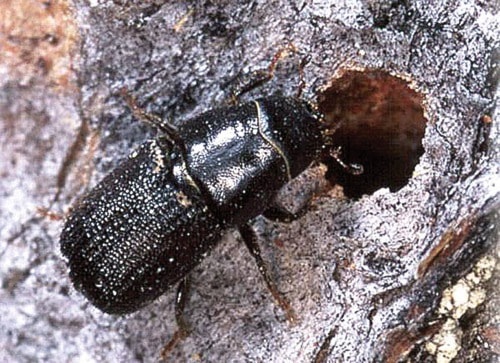Chief Forester Jim Snetsinger has said the province's short and mid term timber supply outlook is not as dismal as predicted five years ago.
He said to Lakes District News that while the Lakes Timber Supply Area (Lakes TSA) has been hard hit by the mountain pine beetle epidemic, provincially things are shaping up to be better than originally predicted.
The predictions are based on annual province wide aerial monitoring. "Using a fixed wing aircraft, flights are made province wide for aerial mapping." Predictions are also about a year behind the destruction. Many trees are dead but are still green, not yet showing the signature red needles of mountain pine beetle destruction. Newly attacked lodge pole pine trees turn red about one year after infestation.
Trees can remain in the red attack stage for two to four years, before turning grey as they lose their needles.
He said, the prediction model used is as accurate as it can get. "These are the best estimates that we can come up with."
During 2004 - 2005, it was predicted that 80 per cent of B.C.'s susceptible pine would be killed by the mountain pine beetle epidemic.
Annual monitoring has now shown a decrease in the percentage of dead pine in some areas of the province.
"Provincially by 2021, it is now estimated that 61 per cent of the susceptible pine will be killed by mountain pine beetle, so provincially it is looking a lot better."
Snetsinger went on to say that areas with gentle terrain and a high percentage of pine leading stands, such as the Lakes TSA, Prince George and Quesnel were the hardest hit by the epidemic.
"All across the central interior plateau was hard hit. The mountain pine beetle has peaked sooner in these areas and fallen off sooner than predicted."
The B.C. Ministry of Forests, Lands and Natural Resource Operations (MFLNRO) estimates that the mountain pine beetle has killed a cumulative total of 726 million m3 of timber since the current infestation began.
On a provincial level, the infestation peaked in terms of volume killed annually in 2004 - 2005 and has slowed considerably since then. During 2004, 141,000 m3 of pine was wiped out province wide. In comparison, during 2010, 39,000 m3 of pine trees across the province succumbed to the mountain pine beetle.
"The attack has peaked and dropped off and it will continue to drop off."
Snetsinger said that while the mountain pine beetle population has decreased, there will always be mountain pine beetle in the forests. "What happened was that the insect reached epidemic population levels. In the Lakes TSA there is still mountain pine beetle and always will be, but the insect's population has decreased."
This could be because the amount of habitat available to the beetle has begun to diminish.
According to the MFLNRO, the beetle has already attacked most of the mature lodge pole pine in the central interior plateau region.
Snetsinger said the new predictions won't change the recent annual allowable cut determination for the Lakes TSA.
This spring, a new Lakes TSA determination was set. The new annual allowable cut is two million m3 of pine, with a partition of 350,000 m3 of non pine.
"The licensees in the Lakes TSA are doing a good job harvesting and as long as they stay in the dead pine for the mid term there will be better harvesting."
He said the outlook for the Lakes TSA has not changed. "Licensees are reforesting the area with new green healthy trees. We will just have to see how long they can stay in the dead pine and what the timber can be used for, whether that be lumber, bio energy or pellets."
"The Lakes TSA's annual allowable cut will be reassessed in the next five to 10 years."
